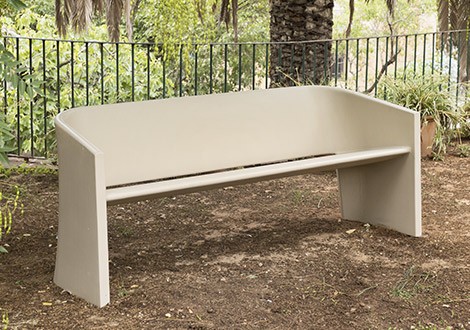
Gonzalo Milá was born in 1967 and studied architecture in Barcelona. He started working at the same time in the interior and industrial design studio of Miguel Milá (his father), and also collaborated with Luis Victory, with whom he already won the 2nd Castilla-La Mancha furniture award for their Arragón Espiga clothes stand. His experience with small objects, which allowed him to control tightly every step of the project, led him to study industrial design at Elisava. In the early 90s Gonzalo Milá set up the Gòtic Sud studio along with a group of architects, designers and photographers.
Along with Juan Carlos Inés, he founded the Inés-Milá industrial design studio. Those were prolific years, during which they entered many competitions and fairs, and designed many different kinds of objects: the Tutombas Pranha, awarded with the first price of the Valencia Furniture Fair in 1994; the Sillarga and Sicurta, the Teula bottle rack and or the Mojón Segado boundary stone, a funny way to mark spaces in street cafés or street markets, awarded in 1995 by AEPD. Along with his father and sister, in 1996, he set up the Milá Diseño studio, where they created some outstanding projects like the reconstructing an antique apartment in Gaudí’s Pedrera, and the series of lamps Rama (2000-2004), ADI-FAD Delta de Plata award in 2001 for achieving to cover any lighting need with a unified formal solution. In 1999, Gonzalo Milá joined the Urban Division of Santa & Cole, where he collaborated in the production and edition sections. In 2001, he decides to work on his own in order to create what he likes most, furniture, and to invent “little things that surprise every day without gratuitousness, starting from new technologies or from applying traditional technologies to new concepts.” He currently shares FUSINA 6 studio with architects Silvia Contreras and Enrica Mosciaro. Each member is dedicated to their own activity and at times, they collaborate in common projects.



